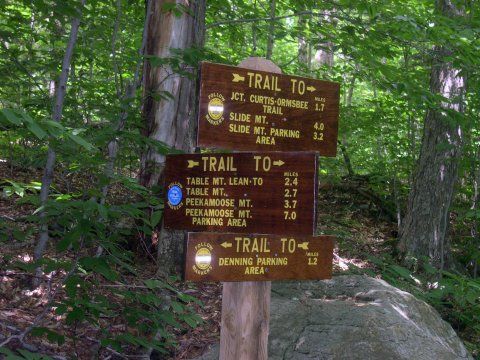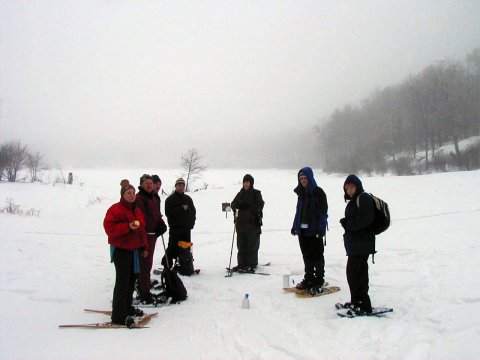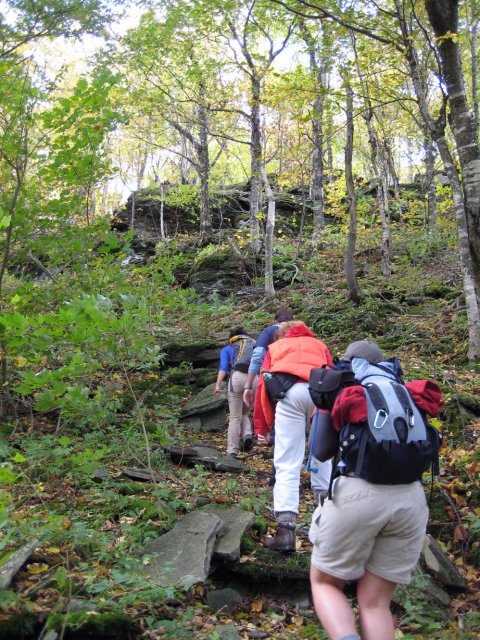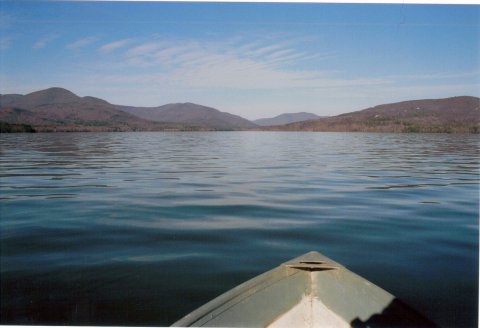
In honor of Lark in the Park, this week's festival of outdoors activities in the Catskills, I'd like to issue a call to arms: If the Catskills are ever going to become an outdoor recreational mecca, we have a lot of work to do.
We need to tear down the walls between hiking, biking, skiing, boating, and other recreational pursuits. We need to tear down the barriers between the entities that manage the resources that all lovers of the outdoors share. The potential is there. But without building intertwined uses of this common playground, our eco-tourism industry will continue to flounder.

If you consider yourself just a “hiker," or just a “fisherman," or solely a “skier,” it is time to reconsider. For those who cross-country and downhill ski, trails need not be exclusive - snowshoers need some love. Most single-track trails are not just for hiking; mountain bikes can navigate them too.
Why is this so important? Well, when it comes to securing resources and funding, there is power in numbers. Take the recent America’s Great Outdoors initiative, a federal program that promotes community-level efforts that connect people to the outdoors. The agenda for that program is being set by a "national dialogue" about the great outdoors. The more voices in the dialogue, and the more diverse those voices, the more they will be heard.

There are places in the Catskills where outdoors enthusiasts of all stripes are coming together, and it's been beneficial for everyone. Events like the annual Hudson River Valley Ramble and the Lark in the Park do exactly this -- but they only last a combined 16 days out of the year. The Cannonsville Reservoir, once an exclusive “paddleground” for rowboat anglers, is now open to kayaks, canoes and other muscle-powered vessels. Some feared that fights would break out between fisherman and recreational boaters, but two years in, the Cannonsville Recreational Boating Pilot Project is a success. Instead of spawning conflict, the program has demonstrated how there is room enough in these hills and valleys for all.
But putting the boaters and the fishermen together isn't enough. The next logical step here is to link the Cannonsville with other natural assets nearby, such as the defunct Rock Rift Fire Tower, the nearby Finger Lakes Trail, and Barbour Brook State Forest.

Some folks are connecting the dots on their own. The folks around the Ashokan Reservoir are getting organized with the intention of bringing something similar east. A similar grassroots effort coalesced around the Tan Bark Trail in Phoenicia. These dedicated people did not wait for what they were passionate about to fall into their laps.
The 2008 update to the 1985 Catskill Park State Land Master Plan now allows mountain bikes on the majority of the park’s hiking trails. The Department of Environmental Conservation has even created four “Primitive Bicycle Corridors” through wilderness areas to encourage this type of use, as well as a mountain bike trail system at Elm Ridge. Even the NYC Department of Environmental Protection encourages -- well, let’s say “allows” -- multiple uses on their watershed lands.
This is a start, but it's not enough. Let's connect the dots.
(Speaking of the land owned by the City of New York, that's the local resource that provides the region's best hope to become an outdoorsman's mecca. I’ll have to elaborate more next time.)
Aaron Bennett is the Regional Director for Catskill Mountainkeeper, serving the high peaks region of the Catskill Mountains, which includes Delaware, Greene, and Ulster counties. His column, View From The High Peaks, appears monthly in the Watershed Post. Drop Aaron a line anytime at aaron@catskillmountainkeeper.org. Aaron took all the photos in this story.















